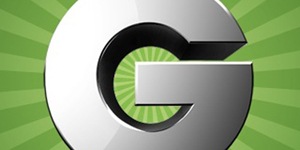While Groupon had a major screw up with its 2011 Superbowl ad, no one can deny that this company has one of the most effective email copywrite styles in the planet.

Here are some great lessons from Groupon on how to write effective email copywrite.
Write-up Objective #1
Describe the business or experience in specific detail. Readers should get a concrete sense of the business and what sets it apart in its field. Readers should also understand the exact nature and value of the deal in the first paragraph. By the end of the write-up, a prospective customer should have all his/her questions about the business and the Groupon answered.
Write-up Objective #2
Entertain. Our discounts get people to buy, our write-ups get people to keep reading & coming back day after day. Good, funny writing helps us capture the kind of brand evangelists who will email the deal to their friends.
The Typical Groupon Write-up Has 3 Paragraphs
The first one includes a one-sentence creative introduction, a transition sentence, and a sentence outlining what you pay and what you get.
The second paragraph focuses on describing the user experience. It should answer these questions: What will I get if I purchase this Groupon? What will my experience be like? The answers to these questions should come in the form of concrete and well-researched details.
The third paragraph provides any contextual information on the business that is useful and interesting, but not directly related to the experience someone would have if they purchased the deal. What is the decor like? Is the business involved in charity? Are there other services I would be likely to take advantage of when redeeming the Groupon? Any logistical information about parking, scheduling, etc is also well-placed in the third graf.
8 Useful Email Copywrite Guidelines
1. Include all of the information you feel separates this business from any of its competitors.
2. Focus on describing this as a great experience, not a great deal.
3. Avoid marketing clichés such as:
- Got X problem? This deal is your answer!
- exclamation points
- slogans, branding language from the featured business’s website
- broad, unsubstantiated claims (superlatives, etc.)
4. Adopt a neutral 3rd person tone.
5. For humor, use absurd, unexpected imagery that reacts to actual details.
6. Avoid humor that relies on pop culture, topical, or celebrity references.
7. Avoid calling out humor with devices such as quotes, parentheses, and adding language that draws attention to the joke.
8. Shoot for 80% informative content and 20% creative content.
Additional References
Take a look at a Groupon Editorial Manual in PDF format.
Last but not least, for further reference check out these deals as examples:
http://www.groupon.com/chicago/deals/the-drawing-room
http://www.groupon.com/chicago/deals/takashi-restaurant
http://www.groupon.com/chicago/deals/caravan-beads-of-chicago
